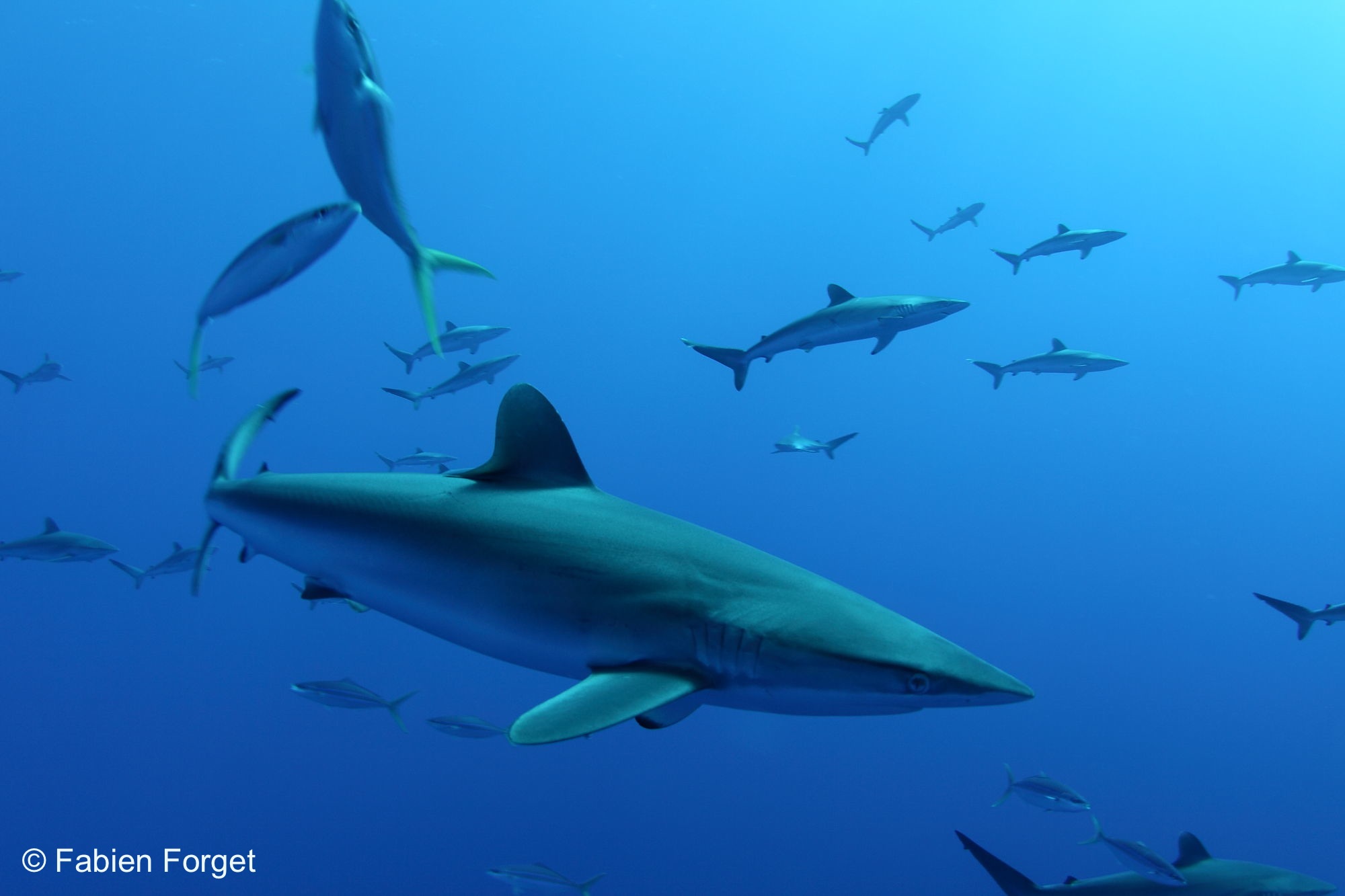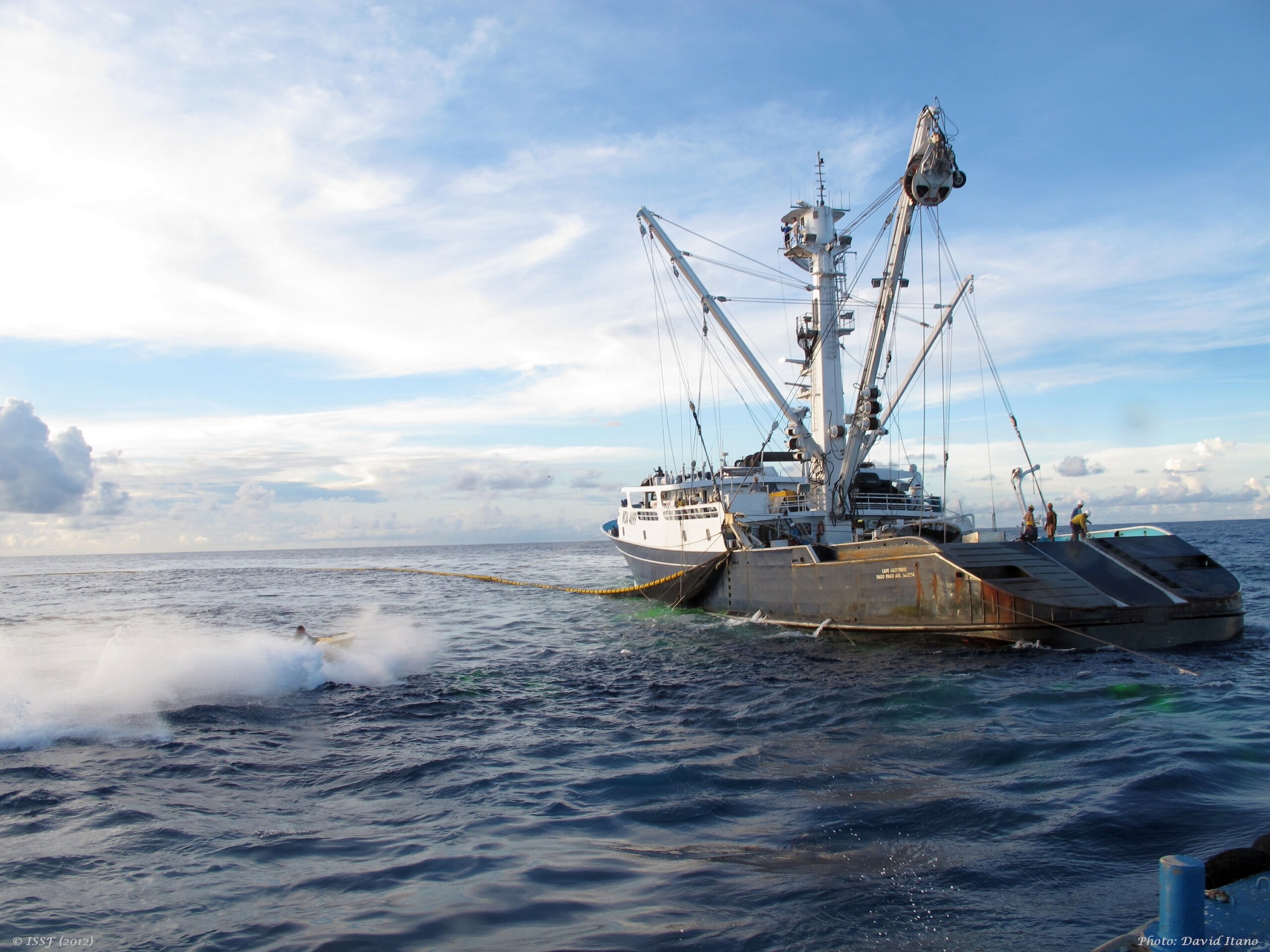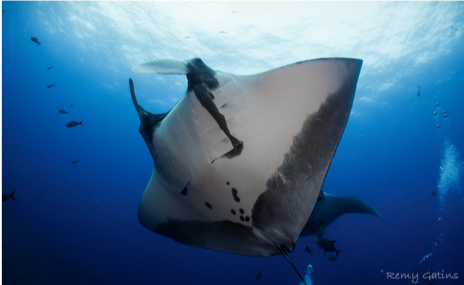
All Hands on Deck for Threatened Manta and Devil Rays
Mobula rays (manta and devil rays) are some of the ocean’s slowest-growing and most vulnerable species, and are facing global pressure from multiple threats, including bycatch in fisheries. However, there is hope for these charismatic giants: preliminary evidence suggests that the methods of capturing and handling Mobula rays in tuna fisheries varies widely, and that minor changes in operational practices could lead to major improvements for their survival. And by working together, conservation scientists, fisheries managers, and tuna fishers can make huge strides for these threatened species.
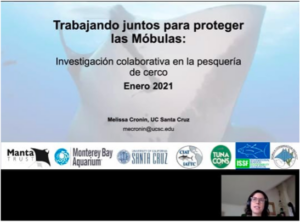
We’re taking a multi-pronged approach to developing Mobula bycatch solutions in Eastern Tropical Pacific Ocean (ETPO) purse seine fisheries with skipper workshops, fisher surveys, onboard educational materials, and pilot bycatch mitigation technology development. Unfortunately, the COVID-19 pandemic waylaid some of our planned research activities. We had intended to conduct workshops in Manta, Ecuador, in January 2021, but instead pivoted to an online format. On the upside, we were able to reach more than 70 tuna vessel owners, skippers, crew, and other stakeholders with the help of collaborators TUNACONS, a group of tuna fishing firms based in Ecuador. The meeting was an opportunity to communicate our research goals, methods, and preliminary findings with tuna fisheries stakeholders and fishers.
We have so far collected more than 25 surveys with tuna captains, crew members, chief engineers, observers, and vessel owners. The goal of these surveys is to understand perceptions of Mobula ray bycatch, identify potential feasible solutions to mitigate bycatch, and to involve fishers and observers in the production of bycatch mitigation solutions. As a small incentive to complete the survey, we have worked with an artist to design and distribute t-shirts displaying the five Mobula species found in the ETPO. These surveys have already provided valuable information about the feasibility of bycatch mitigation strategies for Mobulas. For instance, preliminary results suggest that fishers and captains have ideas for minor operational changes to reduce mobula ray bycatch mortality, including keeping a modified grid or “manta stretcher” on board to quickly release animals, installing a set of small doors in the vessel side to help with heavy individuals, and employing divers to release the rays from the net.
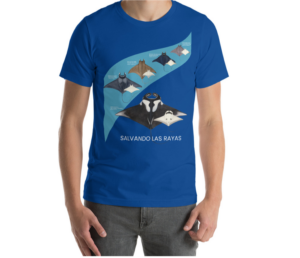
Currently, our team is gathering these ideas, and the next step will be to put them into action with a pilot project aboard a small number of working fishing vessels. It remains unclear, however, exactly which of these methods will result in the best result—in other words, which alteration will allow tuna vessels to avoid Mobula rays or reduce the likelihood that they are fatally injured or killed when they are caught in the net. With this pilot project, we will test the efficacy of these ideas using satellite tags to gauge whether they result in lower chances of mortality after the animal is released.
Additionally, we designed and began distribution for a poster to aid with onboard identification of Mobula ray species (which can be very similar in appearance and difficult to tell apart), as well as to help clarify and emphasize proper handling techniques. The poster, designed by Julie Johnson at Life Science Studios, includes identification details, a map of tuna purse seine bycatch of Mobula rays in the ETPO, a comparison of Mobulas’ life history characteristics to that of tuna and dolphins, and an explanation of the ongoing research to address and reduce this bycatch. We think of it as a one-stop shop for tuna vessels and Mobula rays and are distributing it to tuna purse seine captains for them to hang in the cabin onboard tuna vessels.
With the combination of these approaches, we hope to deliver a bycatch solution that is both feasible and effective for stakeholders in the tuna fishery, but also impactful for reducing bycatch mortality for these iconic and highly vulnerable species.
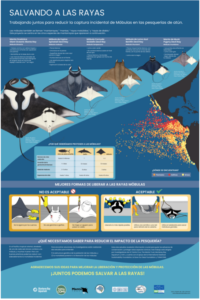
This work is part of a collaboration between UC Santa Cruz, the International Seafood Sustainability Foundation, The Manta Trust, Mobula Conservation Project, the Inter-American Tuna Commission, TUNACONS, the Monterey Bay Aquarium, and tuna skippers, crew, and observers, and has additionally been aided by technical expertise from AZTI. We are incredibly grateful for the support of these collaborators and stakeholders.
If you have questions about this work or would like to participate in this study, please contact Melissa Cronin at [email protected].
Doctoral student Melissa Cronin of the University of California, Santa Cruz, is the Grand Prize winner in ISSF’s International Seafood Sustainability Foundation (ISSF) Seafood Sustainability Contest. She won for her contest entry, “Incentivizing Collaborative Release to Reduce Elasmobranch Bycatch Mortality,” which proposed handling-and-release methods that purse-seine vessel skippers and crew can use to reduce the mortality of manta rays and devil rays incidentally caught during tuna fishing. Ms. Cronin is a Ph.D. candidate in the Conservation Action Lab at UC Santa Cruz studying Ecology and Evolutionary Biology.
